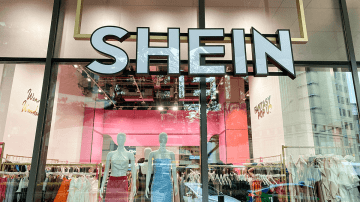This week, a look at the growing demand for personal luxury shoppers. Scroll down to use Glossy+ Comments, giving the Glossy+ community the opportunity to join discussions around industry topics.
Top spenders don’t have time to shop, let alone take part in the exclusive experiences brands and retailers are offering to retain their business.
That’s the proven theory of a growing, pandemic-born retail company shaped by fashion veterans. By specializing in convenience — namely, by catering to personal shoppers — In-Seam is on track to drive $300 million in annual gross merchandise value by 2027.
Launched in 2020 by Forty-Five Ten alum Ann Wehren, In-Seam offers its community of 200 professional shoppers efficient access to the full product assortments of popular luxury brands. Many of these shoppers formerly relied on the shopping services of Net-a-Porter and Moda Operandi, for example. While these e-tailers provide necessary offerings like try-before-you-buy and also streamline access to multiple brands, they have limited SKUs, by design, based on a unique POV and buyers’ selections. For its part, In-Seam offers more than 100,000 products by 160 brands including Dior, Khaite, Altuzarra and Jil Sander, which connect their online product catalogs to In-Seam’s Shopify site. According to Wehren, In-Seam drives between $500,000 and $1 million in annual sales for its top brand partners. And it sells 10 times more products per brand than the average luxury multi-brand retailer.
Among the company’s brand partners is 4-year-old Cara Cara, which sells its vibrant dresses through retailers including Neiman Marcus, Saks Fifth Avenue and Net-a-Porter. Co-founder Katie Hobbs said Cara Cara has partnered with In-Seam from day one. In the last year, its stylists have driven $90,000 in sales for the company, and that number has grown year-over-year. Along with its trunk show and marketplace sales, Cara Cara considers In-Seam sales part of its direct-to-consumer business, which grew 50% in 2023 and is currently up 30% year-over-year. Its DTC sales make up just over 60% of its total sales, and the brand is building toward a 50-50 DTC-wholesale split.
“They’re working with women who are super-qualified [to shop our prices] and have great taste, but don’t have time to shop,” Hobbs said, regarding In-Seam’s stylists. “Along with driving sales, they also [facilitate] brand discovery [for their clients], who are not necessarily influencing on social channels, but they’re influencing in their communities.”
Meanwhile, as Glossy reported in May, many luxury retailers and brands are focused on bringing extravagant, exclusive experiences to their top customers as a loyalty play. For example, among the many experiences it’s orchestrated, MyTheresa recently hosted a multifaceted customer trip to Venice. And Saks took top shoppers on an Aspen excursion, thus adding plans to often already packed calendars.
“At Forty-Five Ten, 80% of our business was driven by products [sold through a] consignment model to the top 20% of our clients who never came into the store — even before Covid,” Wehren said. She pointed to the Bain study showing that 2% of consumers drive 40% of global luxury sales. ”And that 2% of people are busy running their families, their companies and their foundations. They don’t have time to walk into a store or even find their way to a website.”
In-Seam is also fulfilling a need for luxury brands.
“[Because of] department stores closing, consolidating and becoming highly promotional and markdown-driven, brands, rightfully, began investing in their own DTC [sales channels]. But then they were missing out on this client that was being serviced through wholesale.”
In-Seam’s pitch to brands is that, through its vetted network of personal shoppers, it offers access to consumers “with no price resistance in every market in America.”
“That [includes] markets where they will never have a DTC store and may never have a wholesale partner; it’s additive business,” Wehren said, adding, “Brands are recognizing the value that [personal shoppers] drive in the industry, and resourcing them is our entire mission.”
For its part, Hobbs said Cara Cara leverages In-Seam’s stylists’ expertise to inform its direct-to-consumer inventory buys. Before placing seasonal orders, it sends the brand’s lookbook to the In-Seam team to gauge interest in the different products. As a supplement to In-Seam’s shoppers, Cara Cara is currently developing its own personal shopping program to offer “high-touch,” direct clienteling to its repeat customers.
To sell through In-Seam, brands must have at least 20 full-priced SKUs in a “reasonable” size assortment, Wehren said.
The foundation of In-Seam’s personal shopper network was largely built on the ruins of a wave of luxury fashion closures. Wehren’s professional network included buyers at Barneys, The Apartment by Line and Totokaelo, all of which shuttered between 2019 and 2020, and they connected her to those companies’ personal shopper clients. Two-thirds of In-Seam’s current client base, all of which drive $1 million to $15 million annual GMV, came to the company through referrals. They include industry-known stylists Micaela Erlanger and Brandon Fogel. There is currently a waitlist to become an In-Seam stylist, as the company is “at capacity,” Wehren said.
“The [end customer] is looking to this individual for their recommendations on what to buy,” Wehren said. “That outweighs their loyalty to any particular retailer.”
Wehren has focused on scaling her NYC-based company over the last year, including by hiring a sales director, among other key roles — it now has eight full-time employees. In-Seam is on track to earn between $8 million and $10 million in revenue this year and to reach profitability in the first half of 2025. And, according to Wehren, it has the capacity to become a $6 billion business in the U.S. alone. That’s without business extensions, which the company plans to introduce in the next 10 years. Wehren bootstrapped the company before going through the Techstars New York City Accelerator program and then raising a $2 million pre-seed funding round in August 2023.
For comparison, for 2022 — its last reported annual earnings — global marketplace Farfetch reported $4.1 billion in GMV. At the time, its site featured around 400,000 products from 1,400 brands.
Described by Wehren as a B2B2C business, In-Seam’s personal shopper-focused services include facilitating consignment terms with brands, funding express shipping, processing 1099s and providing prompt payments. Some shoppers require consignment terms, because “their client isn’t willing to pay until they try things on and know what they’re keeping,” Wehren said. Both In-Seam and its shoppers take a commission on each sale, with the brand’s resulting margin equating to “a clean wholesale margin, without markdown allowances, charge-backs and RTVs.” In-Seam and its clients only sell full-priced products.
In addition, In-Seam offers digital tools including shareable product-based mood boards, which are shoppable through a universal cart. The company also provides shoppers with personalized homepages on its platform. They feature product recommendations based on their clients’ order history and the sales of other shoppers with similar buying habits. Finally, if a shopper’s clients reach a spending threshold that earns them access to a brand’s runway show, In-Seam connects the brand and the shopper through a showroom appointment.
For the remainder of 2024, Wehren plans to grow In-Seam’s men’s business which launched in December. Among brand partners that have since joined the platform are The Elder Statesman, Stoffa and Billy Reid. In addition, In-Seam will introduce more stylist tiers, allowing creators, among others, to build styling businesses through commissionable shopping links. Growing the company’s number of brand and stylist partnerships is also a goal.
Want to discuss this with our editors and members? Join here, or log in here if you're already a member.




